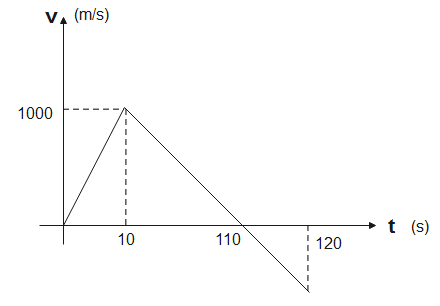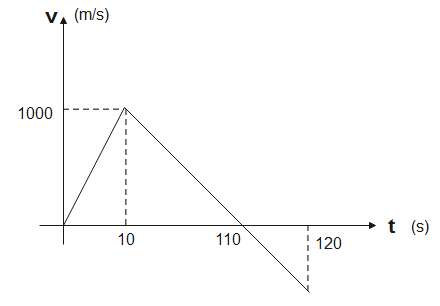Question
Question: From the velocity-time graph of a rocket the maximum height attained by the rocket in \(km\) is- ...
From the velocity-time graph of a rocket the maximum height attained by the rocket in km is-

Solution
Rocket has maximum kinetic energy when it attains maximum velocity. By the law of conservation of mechanical energy, maximum kinetic energy=maximum potential energy. Substituting corresponding values, we can calculate maximum height. Convert between units as required.
Formula Used:
v=td
∴21mv2=mgh
Complete step-by-step solution:

Velocity is defined as the displacement covered in unit time. Its SI unit is ms−1.
According to the graph, the rocket moves in one direction. After it attains maximum velocity in one direction its velocity decreases till it reaches zero and then starts increasing in the opposite direction.
The formula for velocity is given by-
v=td - (1)
It reaches maximum velocity at the moment it attains its maximum velocity.
So, it can reach the maximum height when all of its kinetic energy is converted to potential energy. At maximum height total energy of the body is equal to its potential energy
∴21mv2=mgh - (2)
21mv2 is the kinetic energy of the rocket
mgh is the potential energy of the rocket
m is the mass
v is its velocity
h is height above the Earth’s surface
g is acceleration due to gravity
Substituting given values for rocket in eq (2), we get,
21v2=gh⇒21(103)2=10×h⇒2105m=h⇒5×104m=h
⇒5×104×10−3km=h
∴50km=h
Therefore, the maximum height attained by the rocket above the earth’s surface is 50km.
Note:
As height increases, potential energy increases and kinetic energy decreases. The potential energy is highest at maximum height and kinetic energy is lowest. The mechanical energy is the sum of kinetic and potential energy and it remains constant throughout. As the rocket is moving against gravity, the gravitational pull of the earth does work on the rocket which is stored as its potential energy.
